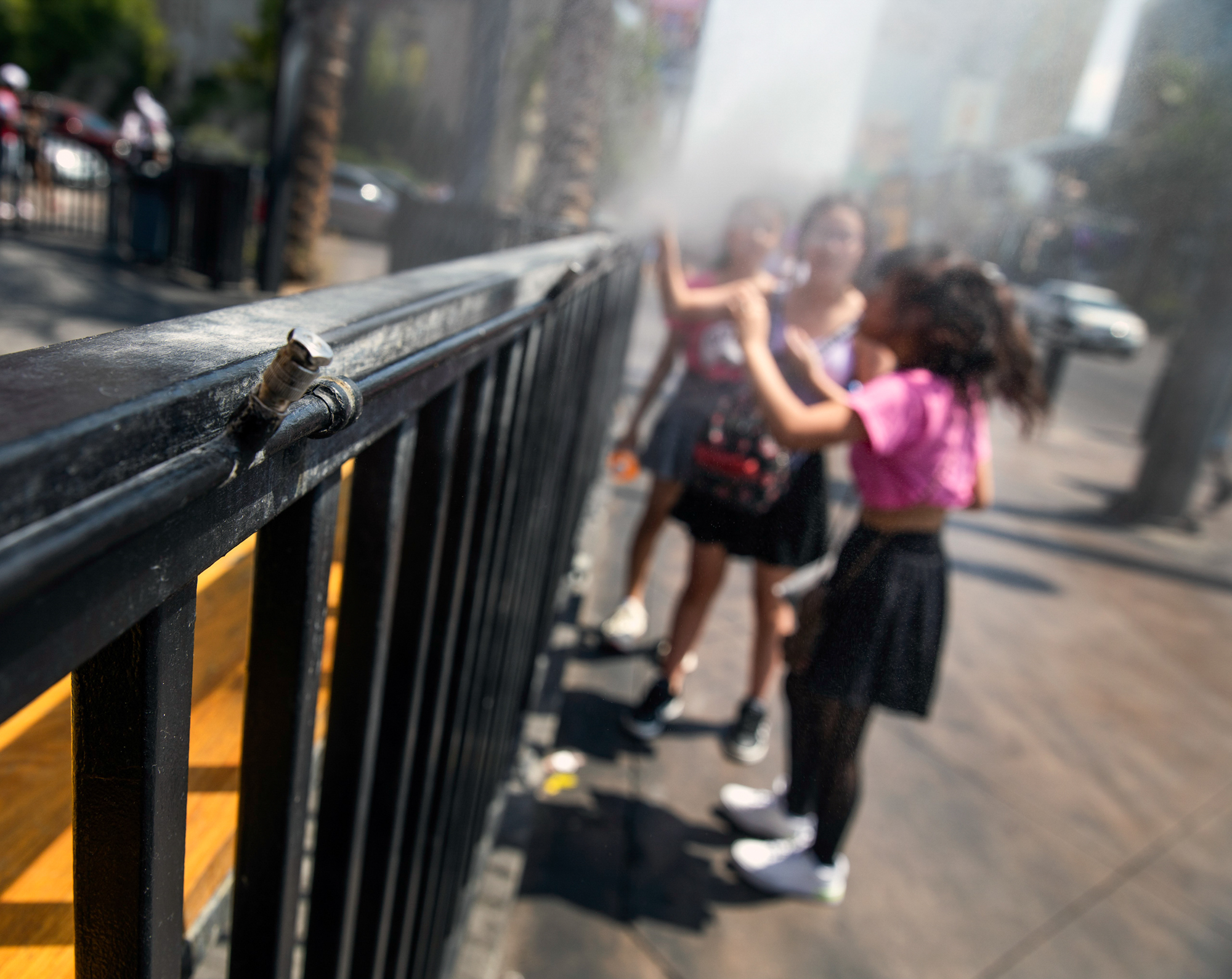As a Las Vegas native, I (Andrea Vargas) have experienced sweltering summers for decades. But the last few years have been different. This past July was the hottest on record, with an average of 97.3 degrees. Combined with the fact that Las Vegas is the fastest-warming city in the U.S., the city is staring down the barrel at increasingly insufferable temperatures in the years to come. And it won’t be cheap. It can cost between $5,000 and $10,000 to install or replace a central air-conditioning unit, and a repair can cost between $100 and $300 on top of monthly electricity payments to keep the air conditioner running.
Additionally, hotter temperatures require more electricity consumption for air conditioners. From air-conditioning energy consumption alone, power plants release thousands of pounds of greenhouse gasses that fuel increasing temperatures. Hotter temperatures demand more energy, increased energy use results in more greenhouse gas emissions and temperatures increase due to the greenhouse effect, starting the cycle again.
Greenhouse emissions also lead to other environmental consequences including poor air quality. Children will be especially affected by these changes. Playing outside in hot temperatures could lead to heat stroke and children are more vulnerable to poor air quality. Surely there is a way to keep homes and buildings cool without emptying wallets every summer and continuing a destructive cycle of increased temperatures.
Surprisingly, a viable solution comes from thousands of years ago and thousands of miles away: the bâdgir (“windcatcher”), an architectural device used across the Middle East. While scholars debate its origin (Egypt in 1300 B.C., or Iran in 4000 B.C.), the bâdgir is still seen across Iran, particularly in Yazd, a city in central Iran and a Unesco World Heritage site.
A bâdgir is essentially a chimneylike structure on a building. The top of this structure has slats on the sides to allow wind to enter. The wind flows down the chimney structure and into a basementlike room (sardab, “cold water”) where wind flows across a pool of cold water to be cooled before entering the building through a vent. Though this may seem deceptively simple, it’s incredibly effective. A 2015 study found bâdgirs cool buildings by up to 10 degrees Celsius (18 degrees Fahrenheit) compared to outside temperatures.
Unlike air conditioners, which are prone to breakdowns and repairs every few years, bâdgirs can last for centuries with relatively little upkeep. After the initial cost of construction, bâdgirs only need the occasional replacement of the water in the sardab and any air filters placed in the chimney structure. Along with being cost-effective, the bâdgir’s use of renewable wind energy makes it environmentally friendly.
All of this is wonderful for the desert climate of Iran. But why would it work in Las Vegas? Fortunately, Yazd and Las Vegas share a Köppen-Geiger climate classification of BWh, or “hot desert climate.” Bâdgirs designed for Iran can work just as well in Las Vegas.
Bâdgirs have already been implemented outside of the Middle East, including in France and the United Kingdom. Most notably, bâdgirs have been implemented in the U.S., only 2 ½ hours away from Las Vegas in Zion National Park.
The Zion visitor center was designed without modern air conditioning, instead relying on bâdgirs and strategic placement of the building’s windows in relation to the sun. In 2014, researchers noted while it was 102 degrees Fahrenheit outside, the visitor’s center had a cool internal temperature of 73 degrees Fahrenheit despite people constantly moving in and out of the building. Using renewable energy is the new norm for cities wanting to decrease their greenhouse gas emissions, as almost 200 U.S. cities pledged to switch to renewable energy.
The bâdgir can be an efficient clean energy source to cool Las Vegas in hot temperatures. It is effective in cooling infrastructure while being cheaper and more environmentally friendly than air conditioners. As more cities switch to cleaner energy, Las Vegas should follow their lead to decrease its emissions and stop the cycle of hotter temperatures.
Charlotte Moremen and Andrea Vargas are students at Pomona College in California and authored this piece for their climate change seminar.
The Nevada Independent welcomes informed, cogent rebuttals to opinion pieces such as this. Send them to [email protected].

